What Does NPK Stand For? And Other Fertilizer Basics
As an Amazon Associate and member of other affiliate programs, I earn from qualifying purchases.
What does NPK stand for? It’s one of the most common questions from backyard vegetable gardeners about the three numbers on fertilizer bags. The type of fertilizer you choose directly affects the results you get, but trying to decipher between the types of fertilizer at the store can quickly become confusing.
So let’s go over some essential fertilizer basics.
The ingredients in fertilizer are categorized as macronutrients and micronutrients. And although micronutrients are certainly important, it’s the macronutrients that are going to make the difference between a great harvest and a garden fail.
First, let’s discuss what makes up fertilizer because that will help you understand how to analyze the types of fertilizer at your local garden center.
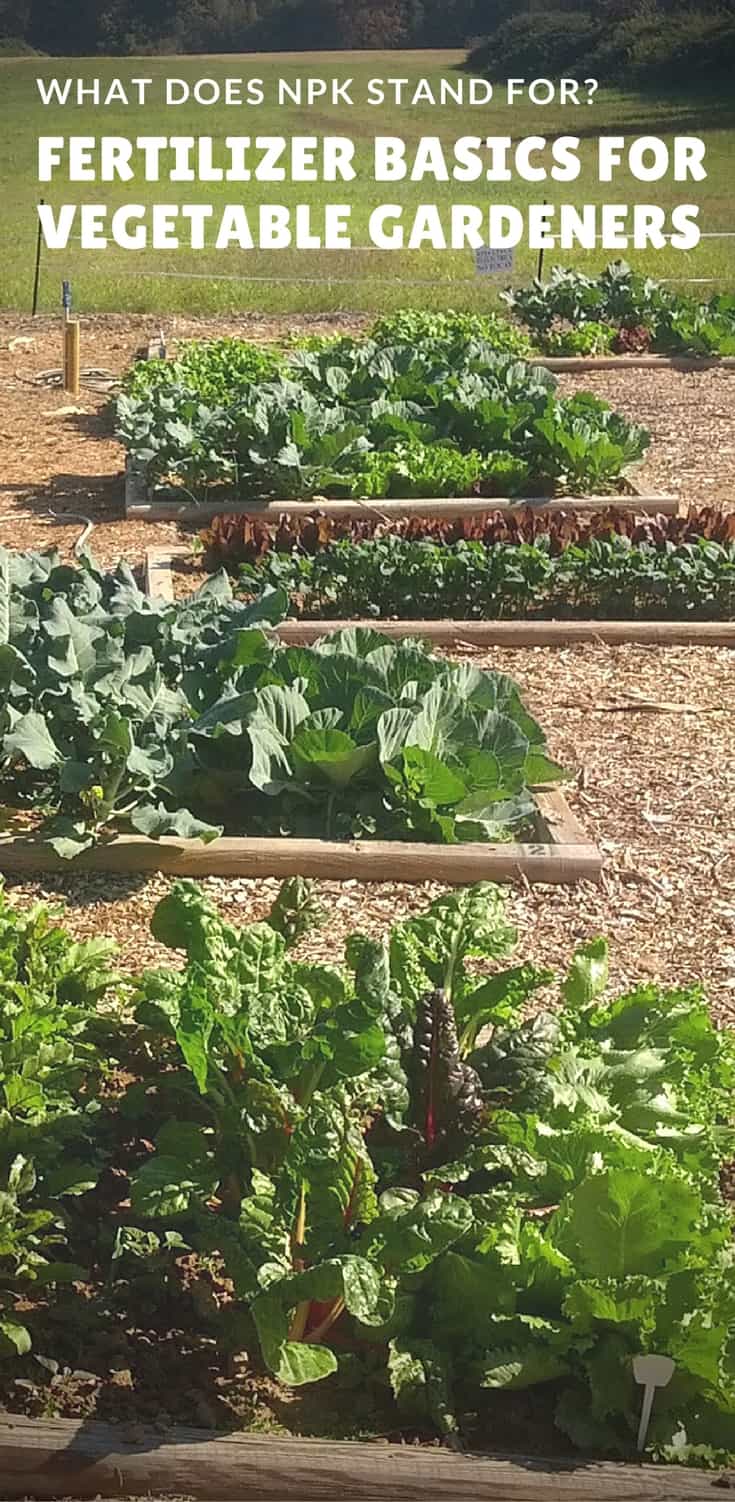
Macronutrients in fertilizer
Macronutrients are the nutrients that plants require in the largest quantities. They make up the bulk of the nutrients in fertilizer and are referenced in the N-P-K ratio label.
What does NPK stand for?
-
(N) Nitrogen=Leaves and Lawns
Plants will use the nitrogen to grow really pretty green leaves. Plants preferentially take up nitrogen so too much will suppress the production of fruit.
-
(P) Phosphorous= Flowers, Fruits, and Roots
Plants use the phosphorous to produce and reproduce. So they will grow strong healthy roots and lovely flowers and fruits. All of your flowering and vegetable plants will need adequate phosphorous and not too much nitrogen.
-
(K) Potassium=Feed and Fight
Potassium is necessary for the plants to perform any other activities, so plants need adequate potassium to take up nutrients and fight off disease and pests. (yes plants can fight off pests. No, not like a ninja, but by secreting chemical compounds that can be offensive to pests and/or attract predator bugs.)
Here’s a helpful video for more information about what NPK stands for:
Secondary nutrients
These nutrients are equally important for plant health but are needed in smaller quantities. Most fertilizers contain some amount of secondary and micronutrients in addition to NPK.
- Calcium aids in cell membrane structure making roots and stems strong. A lack of calcium is often claimed to cause blossom end rot.
- Magnesium is essential for chlorophyll. Chlorophyll is a pigment that helps plants convert sunlight into energy and is responsible for the green color of leaves. Plants deficient in magnesium often have yellow leaves with green veins.
- Sulfur is necessary for building amino acids which form proteins. A sulfur deficiency may or many not be obvious, but you may notice pale leaves and veins as well as stunted growth.
Micronutrients
Plants need these additional nutrients in much smaller quantities, but they are of no less importance if you want healthy plants and food.
- Boron is required for cell growth and making pollen.
- Copper is a used for metabolism and deficiencies will stunt growth and cause yellowing of leaves.
- Zinc is a necessary nutrient for growth and metabolism.
- Iron is also important in making and using chlorophyll and proteins.
Related reading: 5 Unbelievable things epsom salt does for tomato plants.
The uptake of nutrients is greatly affected by the pH of your soil.
If you’re having trouble with nutrient issues despite adequate fertilization, make sure you check for proper pH. There are lots of tools to check the pH of your soil. Every plant will have a specific pH that it performs best in, but most vegetables will do well in soil with a pH near 6.5.
How do I know if my plants need fertilizer?
Ideally, you would send your soil to be tested at your county extension agency prior to planting your garden. They will test your soil for nutrients and give you detailed information about what is in your soil and what needs to be added.
But if you forget to do that, you can watch your plants for signs of nutrient deficiency such as a loss of green color and yellowing leaves. Other signs of nutrient deficiency include stunted plants, lack of production of fruit, and dropping flowers or fruit.
Choosing the right fertilizer for your veggie garden.
Your first consideration will be whether you want to use organic or synthetic fertilizer. There are pros and cons to each type. We prefer to use organic products, and would only rarely or in desperation use synthetic products.
Organic fertilizer
- Organic fertilizer utilizes natural sources of nutrients like manure, bone meal, and plant material.
- The organic components are not water soluble and don’t wash away.
- Using organic fertilizer will improve the overall health of the soil over time.
- Organic nutrient sources will require some break down in the soil before the nutrients are available to the plants.
- Since they require some breakdown, plants don’t receive an immediate surge of nutrients.
- Many garden soil additives are a good choice for organic fertilizer
Synthetic fertilizer
- Components are treated to become water soluble making them very easy for the plants to absorb.
- Since the nutrients are immediately absorbed and used by plants, plants go through a quick surge in growth.
- Synthetic fertilizers can burn plants if used too aggressively.
- The nutrients are readily washed away with watering and rain, so they must be reapplied often.
- Overuse can lead to algae problems in nearby creeks and ponds due to run-off.
- Over time, gardens treated solely with synthetic fertilizers will actually become more and more depleted of nutrients.
Analyzing the N-P-K ratio
Above we talked about what NPK stands for: Nitrogen-Phosphorous-Potassium, but you need to be able to use the NPK ratio to decipher between fertilizer types.
A lot of synthetic fertilizers use a 3-1-2 ratio meaning it is most concentrated in nitrogen followed by a moderate concentration of potassium, and phosphorous in the lowest concentration.
Remember that nitrogen = leaves and lawns.
A high nitrogen content is great for grasses and lawns. Therefore, grass and lawn fertilizers are formulated with low or zero phosphorous and high nitrogen.
Remember that phosphorous = flowers, fruits, and roots.
For fertilizing a vegetable garden, look for nitrogen (the first number) to be equal to or less concentrated than phosphorous (the middle number).
Any fertilizer you choose should also contain potassium (the last number) in order for your plants to be able to take up nutrients, but for the purposes of a home gardener, don’t worry as much about the concentration of this nutrient.
So 5-10-10 fertilizer or 5-10-5 fertilizer would be fine for your veggies.
In a food garden, try an organic fertilizer with increased concentration of phosphorous for robust healthy plants loaded with produce. But don’t wait until they’re yellow to apply it.
Go ahead and add it in before or at the time of planting and reapply every 3-4 weeks.
Using compost in the garden is another way to gently and naturally fertilize your plants. Whether you make enough of your own or have to purchase organic compost, it is great to use as topsoil and potting soil.
Read my article about choosing a compost bin.
A final consideration: heavy feeders vs light feeders
Many flowering and fruiting plants like tomatoes are heavy feeders. These plants will need a steady supply of fertilizer to grow healthily through the growing season. Adding organic fertilizer to the planting hole at transplanting is ideal for these plants.
Root crops fall into the moderate feeder category. They need healthy soil to grow properly. Organic vegetable (no manure) compost is the best choice for these guys.
Greens and beans are the light feeders that will require the least amount of supplementation.
Plant heavy feeders where light feeders grew last year and vice versa. Rotating crops this way is healthier for the soil.


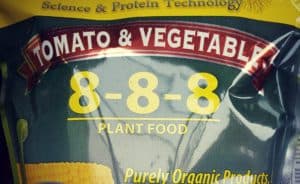
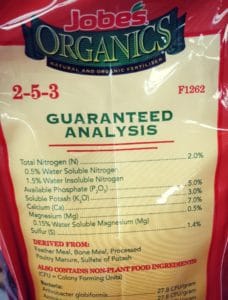
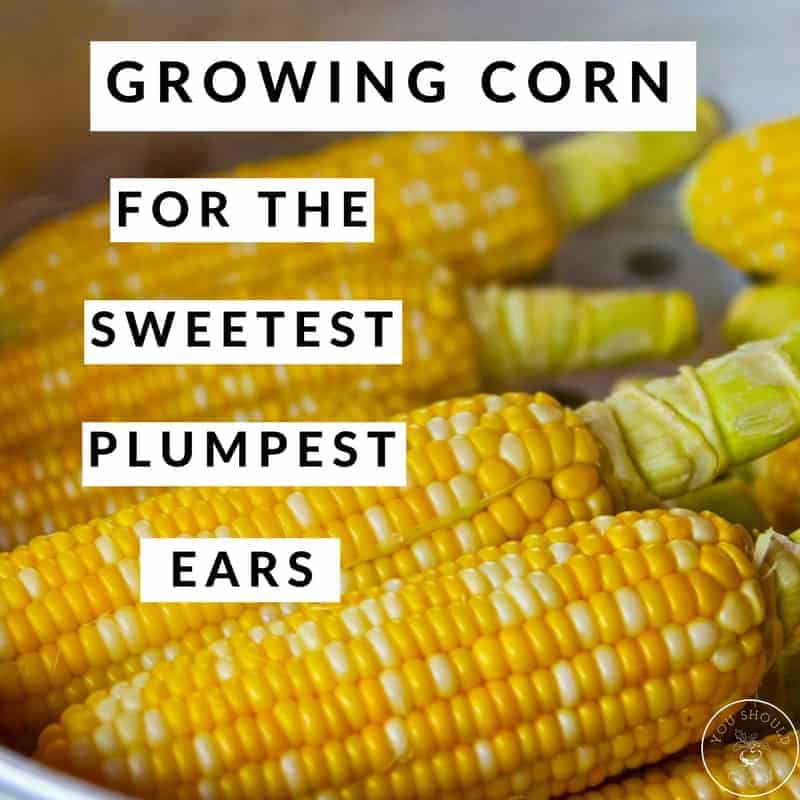
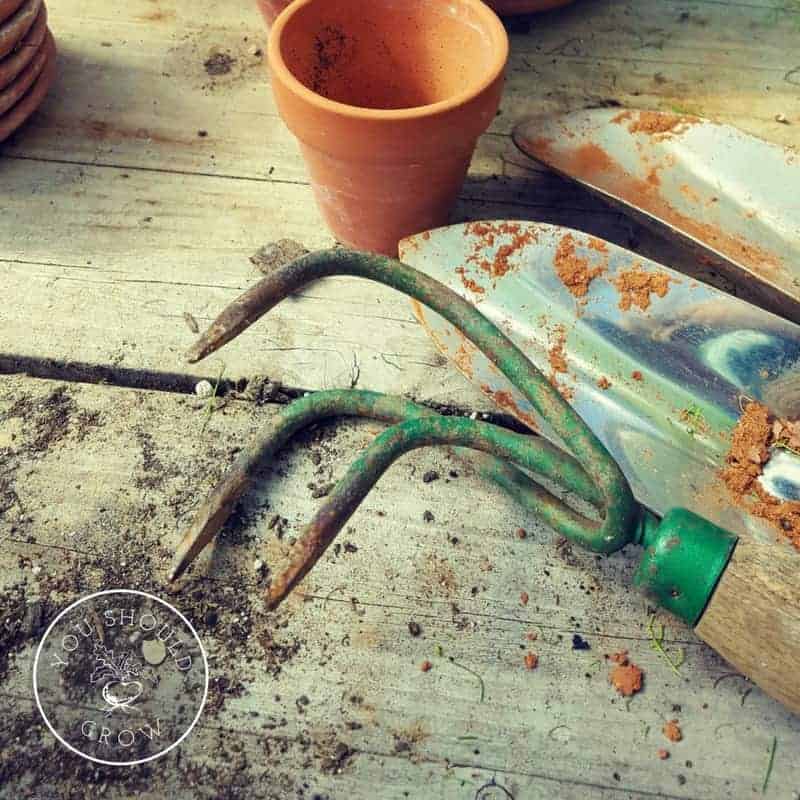
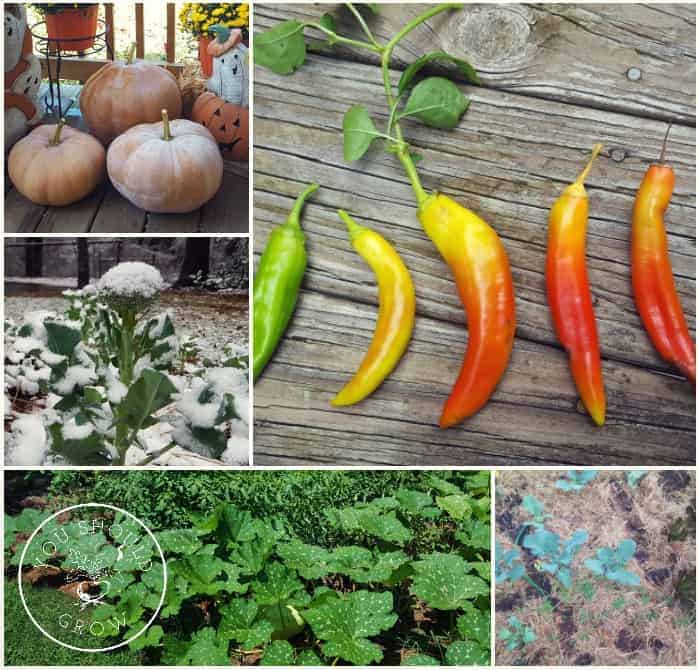
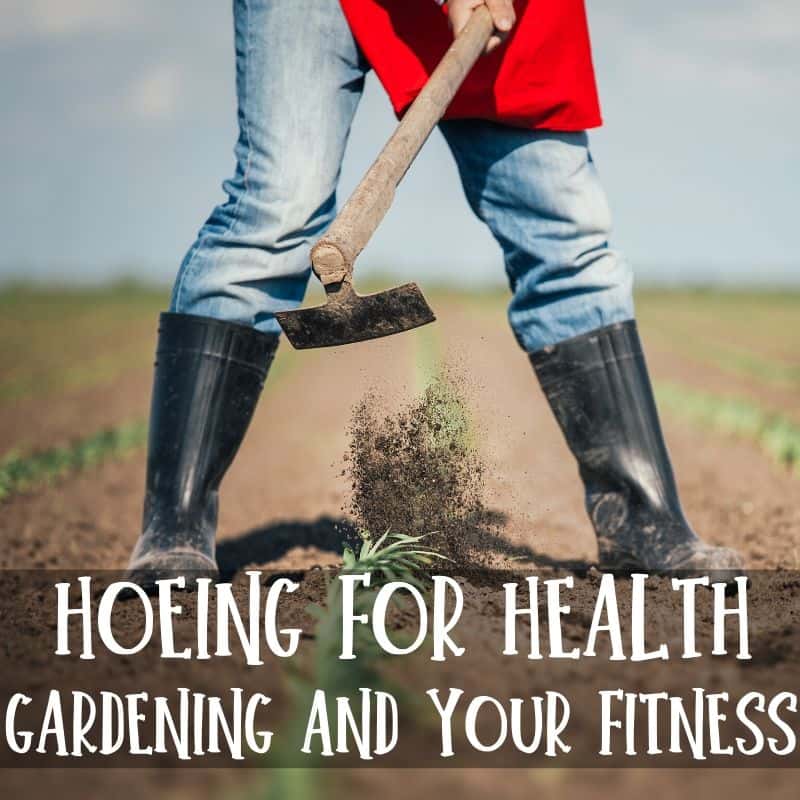
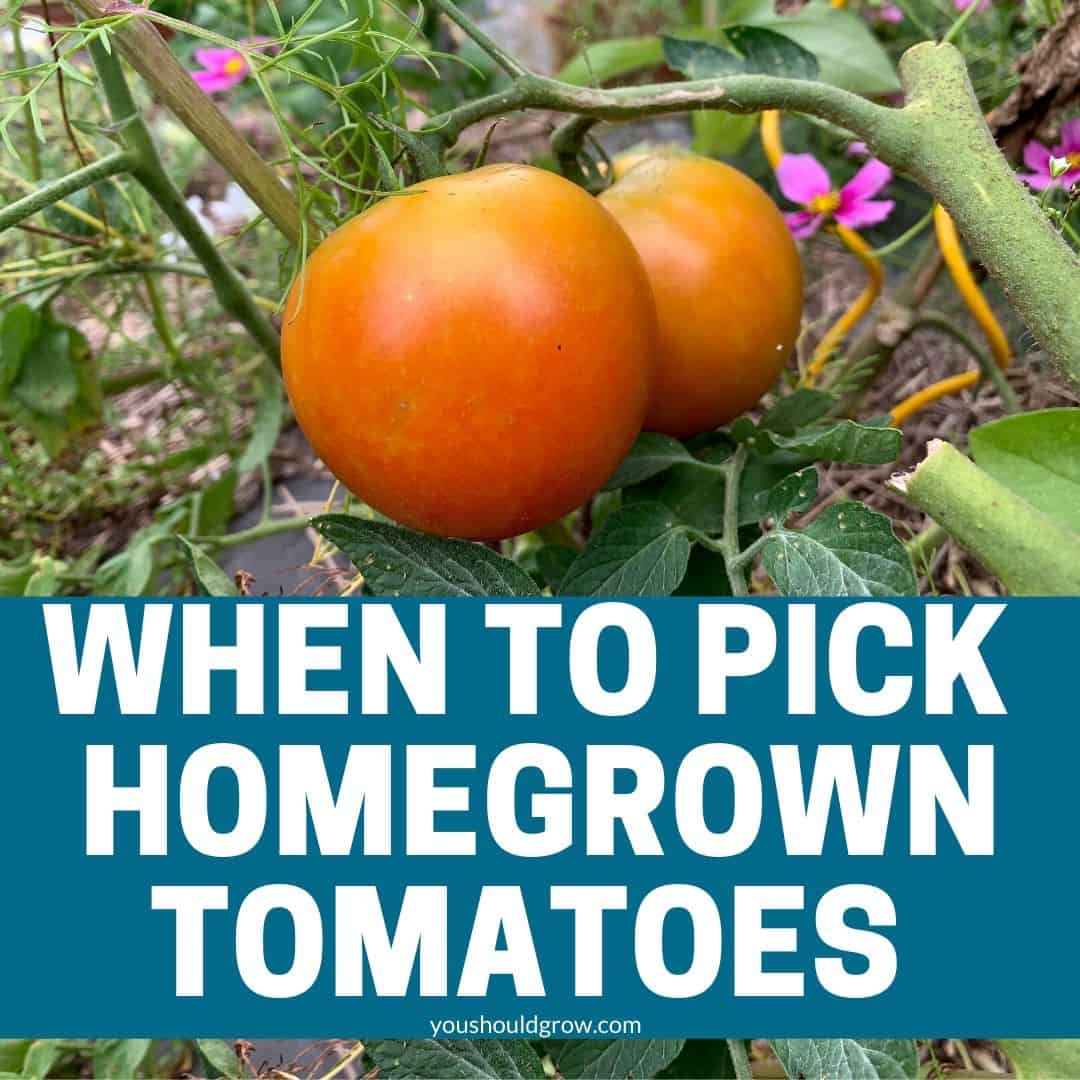
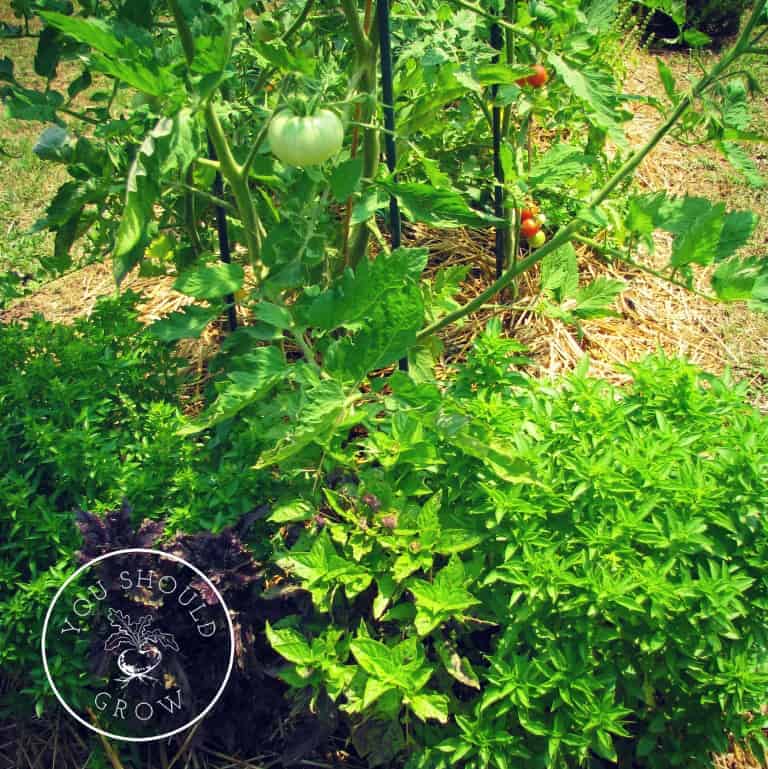
I LOVE fertilizer. THanks for all the good tips!
I know it’s not exciting, but it’s so important to understand. Thanks for reading!
I appreciate the information your article has given me about what fertilizer is appropriate to use for my garden. I’ve always found it thrilling to watch a seedling grow into a mature plant — that’s how I got into gardening. I didn’t know that the ratio of sodium, phosphorus, and potassium has a corresponding type of plant that it could be used on. I’ll be sure to remember that from now on –thanks!
Hi, Dan! I’m so glad the article was helpful! Thank you for visiting and letting me know. 🙂
Thanks for the fertilizer tips! I want to help my garden grow better, so I have been looking for tips. I like what you said about synthetic fertilizer allowing plants to absorb the nutrients immediately. I want to make some progress right away, so this seems like the way to go. I will have to find the right synthetic fertilizer for my garden, thanks.
I’m glad the article was helpful! Thanks for visiting, Jack!
I grow Organic & Heirloom vegetables, so am going to go with the Organic Fertilizer. Your article was very helpful, Thanks so much.
I’m so glad to hear that! Thank you!
God! This is what I ws looking for, grt article for beginners of kitchen garden. Thank U so much.
Awesome! Glad it helped!
Hi! Thanks so much for the tips!
I’m in fruiting stages and close to harvest for a lot of my crops. Some of my plants are starting to yellow and other are dropping flowers and just not producing like I had thought. I have tried to grow an organic garden, so I have only used my own compost and some of our aged horse manure.
I don’t have anymore compost that is 100% ready (I can still see brown grass clipping in it, but all of the food has decomposed). I can use more manure and I have a bucket of ashes from burning a stump, other logs, and brush.
My question is, what would be most beneficial to use? I can’t really afford to go out and purchase fertilizer, but if I did, what would be the most beneficial at this stage?
Would adding the ashes and watering in help with the leaves and flowers, and then the fruits? Or should I do a combination?
Is synthetic fertilizer harmful in any other way than eventually depleting the soil of nutrients?
Lots of questions, sorry and thanks in advance!
The ash will give them potassium, but it can also change the pH. I would put the ash into the compost pile, but not use it on your plants without a soil test. If you used homemade compost and aged manure, it’s hard to say whether it’s a nutrient issue. Have you ruled out disease and pests as a cause for the yellowing? Watering and weather can also cause poor production and dropped flowers. If you rule out the other issues and don’t want to do a soil test, I would add liquid organic fertilizer with equal NPK (all the same numbers). Synthetic fertilizer is okay on occasion as long as you don’t use too much and burn your plants.
Thank you, Laura!
I was very pleased to find this website!! I wanted to thanks for your time for writing this blog. I definitely enjoying every little bit of it and I have bookmarked you to check out new stuff that you will post in the future 🙂
Thank you for the advice on fertilizers!